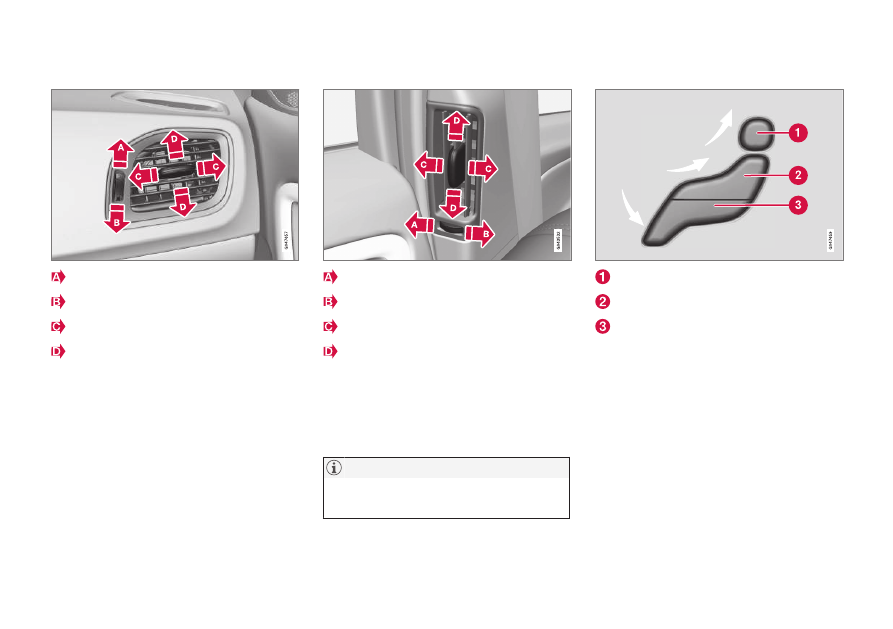Volvo S60 Cross Country (2018 year). Manual - part 7

||
CLIMATE CONTROL
124
Air vents in the dashboard
Open
Closed
Lateral airflow
Vertical airflow
Aim the outer vents at the side windows to
remove misting.
Air vents in the door pillars
Closed
Open
Lateral airflow
Vertical airflow
Aim the vents at the windows to remove misting
in cold weather.
Aim the vents into the passenger compartment to
maintain a comfortable climate in the rear seat in
hot weather.
Remember that small children may be sensi-
tive to air flows and draughts.
Air distribution
Air distribution - defroster windscreen
Air distribution - air vent instrument panel
Air distribution - ventilation floor
The figure consists of three buttons. When press-
ing the buttons the corresponding figure is illumi-
nated in the screen (see following figure) and an
arrow in front of each part of the figure shows
the air distribution that is selected. For more
information, see the air distribution table
(p. 132).